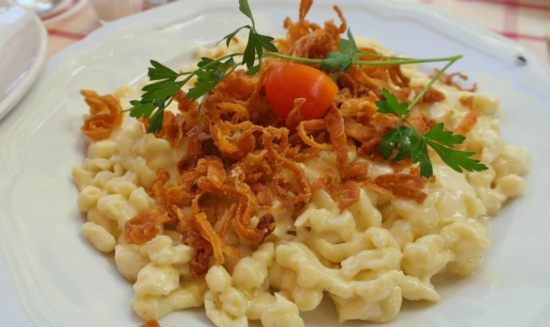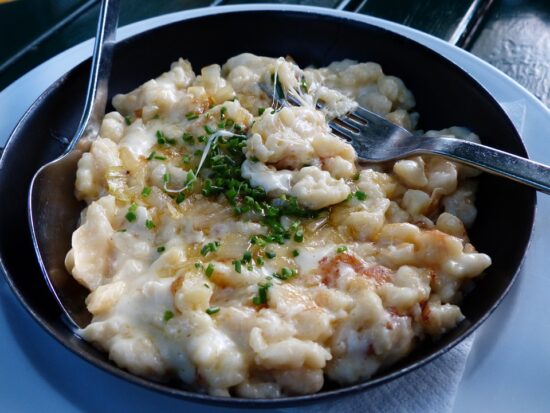Spätzle
Spätzle. The origin or the linguistic origin of the spaetzle is controversial and has not yet been clearly clarified. The first written mention was made in 1725, but the history of “Swabian pasta” is likely to be much older. In fact, spaetzle is considered to be the foundation of original Swabian cuisine.
Today it also considered a tradition in Berlin as well. Spaetzle are very nutritious, easy to make, and versatile, they used to be an integral part of the daily diet of poor people, of whom there were very many, especially in Swabia. There are various theories about the linguistic origin of spaetzle. For example, one can read that women cut off small pieces of dough from a piece of dough that was held like “a sparrow in their hand” and put them into the boiling water, thus forming “little sparrows”.


Another theory suggests that the name originated in the Italian word “Spezzato”, which means “fragmented”. So it is quite conceivable that this name was adopted by the Swabians in the course of time and “Germanized”. Whatever the linguistics of the word, the cheesy flavor and the texture of this dish are just unbeatable.
Many stories about the national dish of Baden-Württemberg bear witness to its popularity and regional roots. There is a story about the Württemberg regiments which did not want to do without their spaetzle that gave nourishment to their sense of home, during the Russian campaign in 1821. In addition, there are reports of Swabian knights who once followed Emperor Barbarossa (Friedrich I) to the Holy Land armed with “swords and spaetzle board”.



